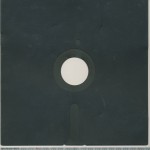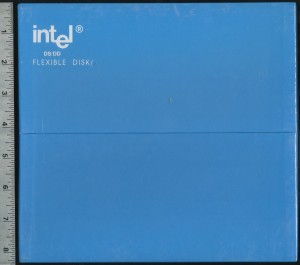Intel 8 Inch Flexible Disk – 1.2MB of Data
The original floppy disk was introduced by IBM in 1971 as a way to serve updated microcode to their clients mainframes. Each disk could hold around 80KB. By 1977 the DSDD (Double Sided, Double Density) 8 Inch disk was released which held 1.2MB of data. They were officially known as a ‘Flexible Disk’ but floppy disk rapidly became what people referred to them as. Intel marketed and sold them as well as many other manufacturers. Intel accepted code for MaskROM based processors, on 8 inch floppy, tape, and a variety of other formats in the 1970’s. Certainly 1.2MB was a great plenty of storage for the 1-8KB of ROM most microcontrollers and MaskROMs supported in that era.
In 1978 a ‘consumer’ version of the floppy was released, in a more friendly size, but lower capacity. This was the 360KB 5.25″ disk that was eventually made famous by the IBM PC, TRS-80, Apple. and about every other computer of the late 1970’s and early 1980’s. 
Floppy disks continued to evolve into the late 1990’s trying to compete with the CD-ROM, with capacities eventually hitting 240MB with the LS-240 Laser Servo drive. In the early 21st century companies, largely led by Apple, began to delete the floppy from their computer line up, causing quite a stir. However, users quickly realized that contrary to popular belief, the floppy really wasn’t used much. Ultimately the use of the floppy, and the CD have been replaced with the USB Flash Drive, and in many ways, cloud computing.


